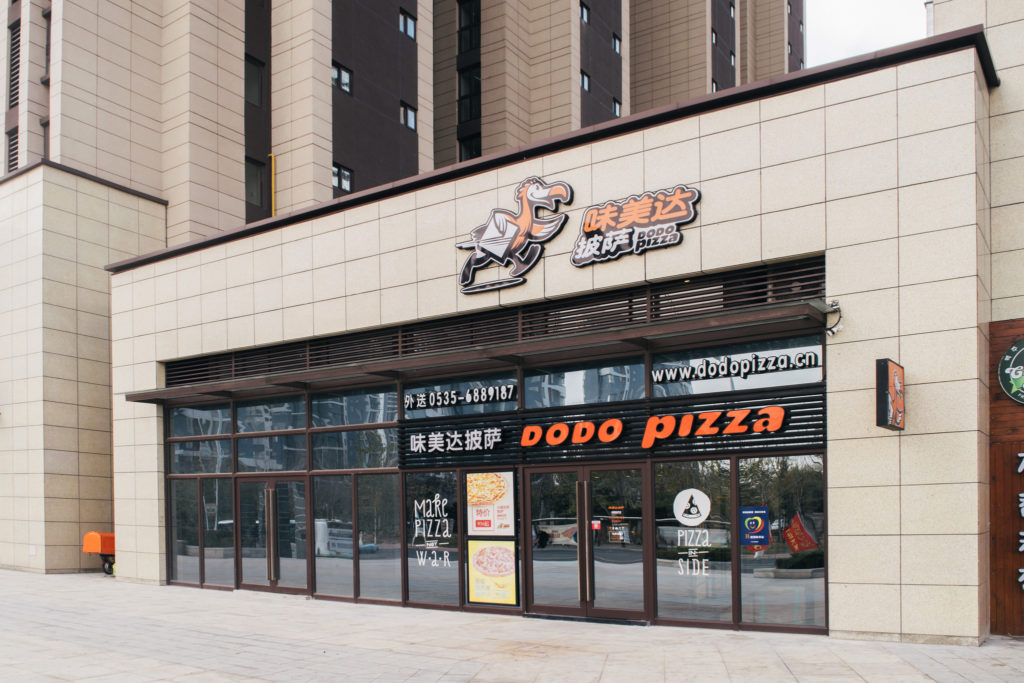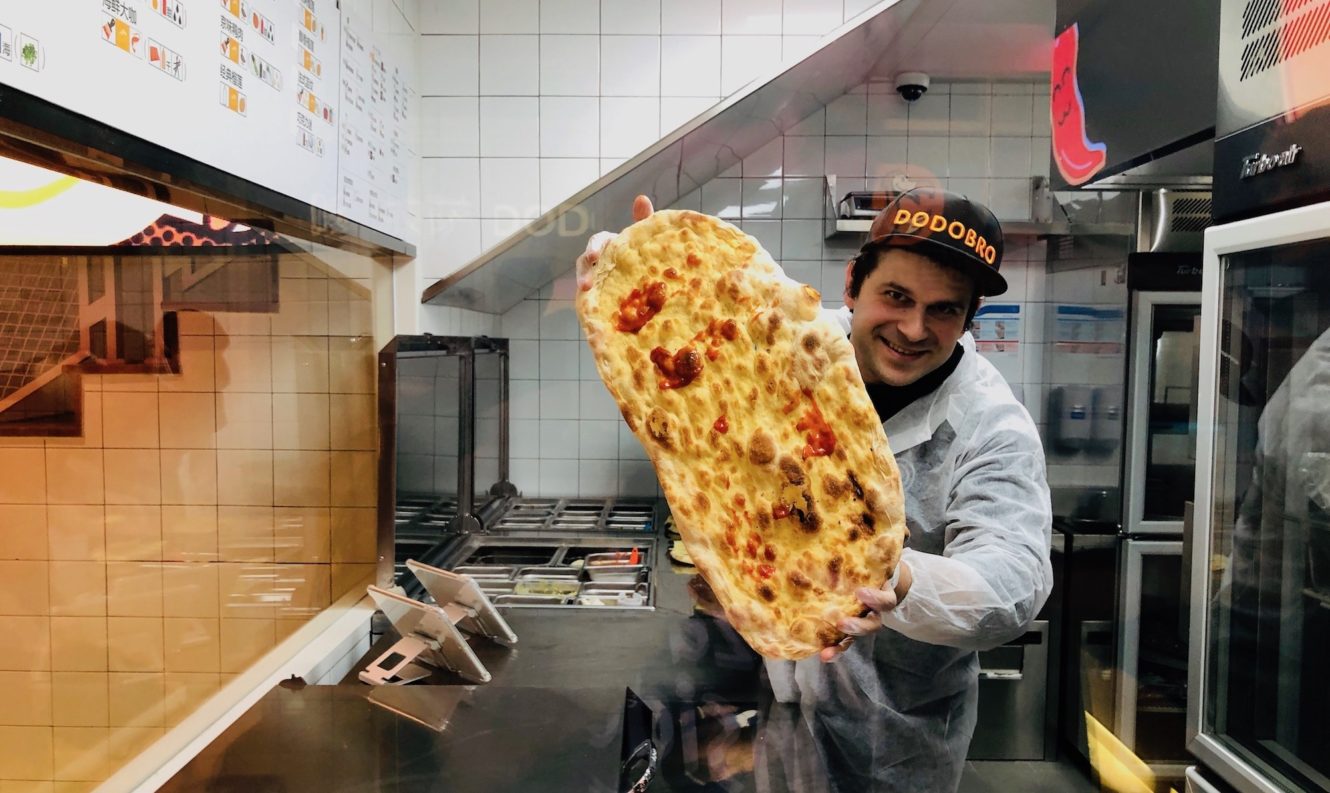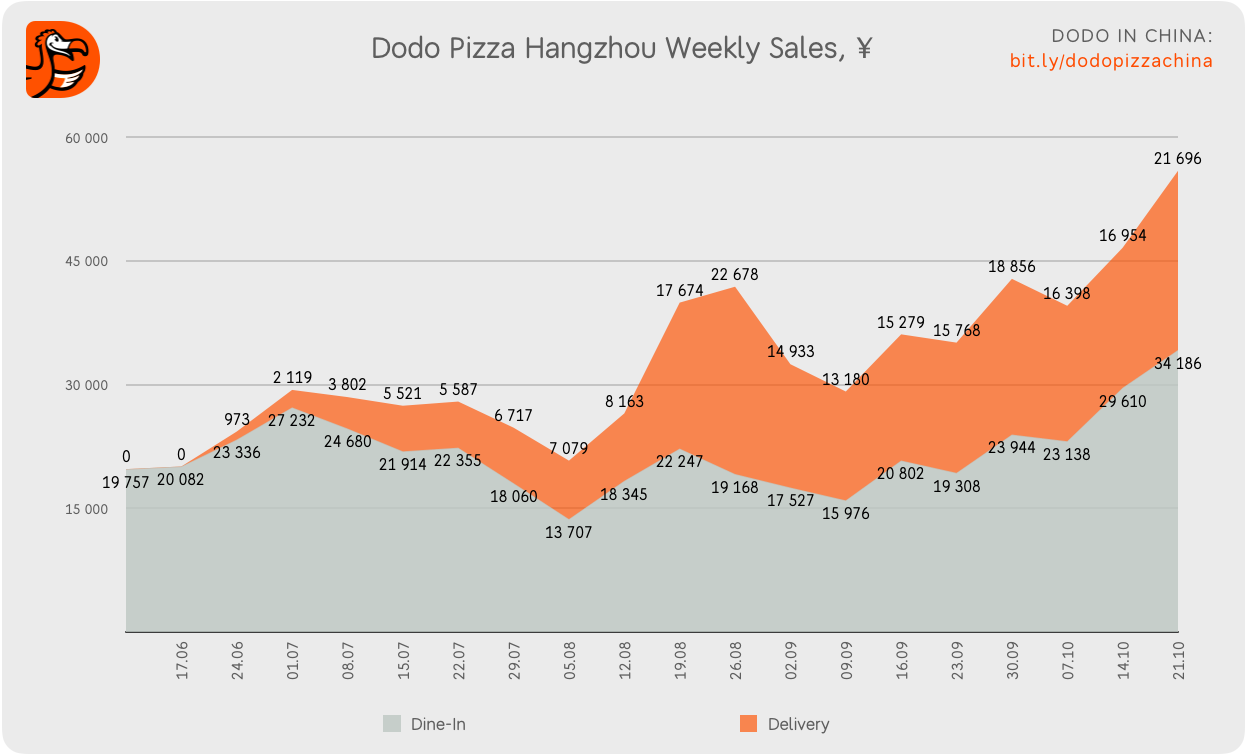
Dodo Pizza in China: reinventing the pizza business for the world’s largest market
06 September 2019
How many pizza shops, operated by one brand, can a country accommodate? In the UK, this number is just over 1,000. In Russia, Dodo Pizza’s home market, it will probably be close to 1,500. In China? Much more than that even.
While many people still see China as a place that produces all the stuff that the rest of the world consumes, its huge internal market is developing rapidly. And that is the reason why Dodo Pizza founder, Fyodor Ovchinnikov, has chosen China as our primary market for the future—along with the UK.
Having built a market-leader in Eastern Europe and a brand known in 12 countries, our team has dared to up its game and is aiming to prove that we can grow at the same pace in other parts of the world as well.
Take one: one pizza shop survived, another one… didn’t
Before going all in, we sounded out the market with the help of our partners—Russian-speaking entrepreneurs living in China. In 2016, one of them opened a Dodo Pizza in Yantai, another one in Hangzhou.
It was a brave venture—back then, we could allocate only limited resources to our China project.

Of course, we adapted the menu to local tastes. But essentially, these pizzerias didn’t differ much from our pizza shops in other parts of the world. Their business model was based on a mix of dine-in and delivery and they offered a typical pizza based on cheese and red sauce with only a few local variations.
Within five months, Yantai reached $11,000 in monthly sales. With around $20,000 on average the enterprise maintained minimum profitability. Hangzhou never even achieved such modest results and was closed after three years.
So why did a business model, which had been proven in other countries, fail in China?
The red ocean of the delivery market in China
There are three critical problems that undermine any new venture in the pizza delivery market in China.
- Delivery platforms have amassed total control of the market—everybody uses them and, for a new brand, it’s almost impossible to switch customers to your own delivery service.
- Hundreds of family businesses compete on these platforms for the attention of the customer—usually not with superb quality, but with low prices.
- While in the West pizza remains the number one product for delivery, in the East people are now used to ordering any type of food. Pizza is just one option on their list (and not the favorite, by the way).
In hindsight, it’s now clear that our first foray into China was doomed to fail.
We didn’t have a product that the audience craved, we couldn’t sell it as cheaply as the others and we couldn’t build a brand on platforms that we didn’t control.
How we opted out of the delivery business in China
Faced with these same challenges, other international brands have tended to drastically change their original business models. In China, instead of doing delivery they do restaurants—with waiters and pizzas served on plates.
We believe that being focused on your core business is the key to success, so from the get-go we decided that full-scale restaurants were out of the question. We had to stick to our guns (and our guns are affordable prices, quick service, and pizza boxes).
Yet we realized that our brand needed to maintain its own source of new customers, independent of delivery platforms. And if all of the online sources are controlled by the internet giants, offline was our only option.
We needed to seize the best, most visible, locations. We needed a highly attractive pizza shop that could convert passersby into customers. We needed a product that would be suitable for dine-in and the fast casual format, a product that would create a wow-effect and turn accidental customers into fans.
Dodo Pizza started out in Russia as a delivery-only enterprise. In China, we needed to opt out of delivery altogether.
A totally revamped concept for China: Roman pizza, video walls, cashless operations
We made three key changes to our model:
1. Roman pizza
Instead of traditional pizza made for delivery, we opted for so-called Roman pizza which is not only light and tasty but more suitable for our goals because it entails using pre-baked frozen crust.
Pre-baked crust can be prepared in a dough commissary located in a less pricey area and delivered to the pizzeria where it can be stored more efficiently than traditional dough balls which need walk-in coolers and lots of space.

This will allow us to have high turnover even in a small pizzeria (and that’s critical since the best, highly visible, locations are expensive). Pre-baked crust also speeds up service, which is essential for our new fast casual format.
2. Video walls
Just because lots of people pass by your joint doesn’t mean that lots of them will decide to stop by—especially if they don’t know your brand. So we asked ourselves: How can we increase our capture rate?
We needed our design to really impress people and make them curious (which is not that easy in China with its visual culture that for us, westerners, sometimes seems crazy).
So we decided to build a futuristic pizzeria with walls turned into screens. We wanted these screens to broadcast video art inspired by our products.
3. Cashless operations
Since Dodo Pizza is a digital-first pizza franchise, we also wanted to leverage our tech prowess to achieve better results. It helps that in terms of tech adoption, China is ahead of Europe and even the US. It’s already a mobile-first nation.
So we made an educated guess that a cashless format might be best suited to our needs and the market.
No cashiers or cash desks equals no waiting lines and lower costs.
We decided that our futuristic pizzeria would only accept payments made through our WeChat app. You walk in, scan a QR-code with your phone, place an order, pay in the app, and grab your meal when it’s ready.
Fast and cool!
New Dodo Pizza in Hangzhou: what we learned after the launch
With such an innovative concept, our team faced lots of challenges.
We had never worked with pre-baked dough or developed apps for WeChat. Yet within six months our minimum viable product was ready. In May 2019, our first company-owned Dodo Pizza in China opened its doors in Hangzhou.

People dub this city the internet capital of China: it’s a technology hub and home to the e‑commerce giant Alibaba. So it seemed like a good place to launch our “pizzeria of the future.”
As soon as we opened our pizza shop, we started improving it.
1. More fruit, less cheese
The most popular option on our menu turned out to be a durian pizza (which isn’t even a pizza in the strictest sense but a durian and cheese tart).
After conducting lots of interviews and customer surveys, we came to the conclusion that pizza will never be considered a real meal in China. So we decided to push our concept even further and present our product as a trendy snack or even a dessert topped with fresh fruit.
We needed to do away with cheese and introduce more recipes appealing to local tastes (we now even have a pizza with marshmallows).

2. Video walls 2.0
We realized that our video walls needed more work. A promising concept in theory, in practice they had issues.
The team got a bit carried away in its creative endeavors—people liked the visuals in general but many of them thought that our place was a trendy clothing brand, not a pizza shop.
We had to change this.
3. Cashless heaven
On the bright side, cashless operations didn’t cause us or our customers any significant troubles so that was the right call from the start.

4. New interior
In August, we rethought our interior and installed new furniture to make the dine-in area more cozy and welcoming.
Future plans
Our team is already looking for a second location while improving the customer experience in Dodo Pizza Hangzhou‑1 with a new menu, rethought visuals and boxes, and updated digital products. On top of that, we’ve started working again on delivery as a secondary channel of sales.

By 2020, we want to turn Dodo Pizza into a perfect fit for the Chinese market—and to have a business model that is proven in several locations.
After that, we’ll start scaling our business through franchising and building a large commissary that will be capable of supplying dozens of pizza shops.
We might also consider raising funds for our China branch in 2019/2020.
Dodo Pizza China is a work in progress and one of the most exciting projects we have ever had—no wonder that it’s a pet project of Fyodor Ovchinnikov, Dodo Pizza founder and CEO.
Tackling the pizza market in China is risky and demanding but we believe that all of our efforts will pay off in the long run.
Further reading: Closing in on 10,000. How things are going at Dodo Pizza Hangzhou (October 2019)
